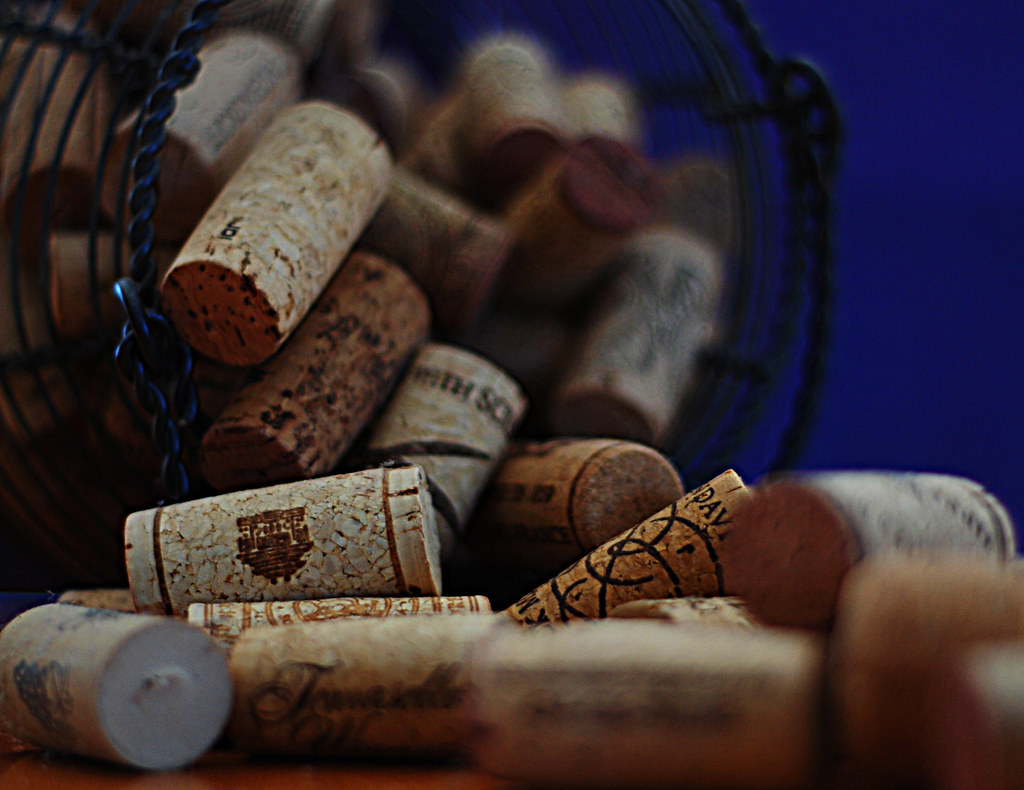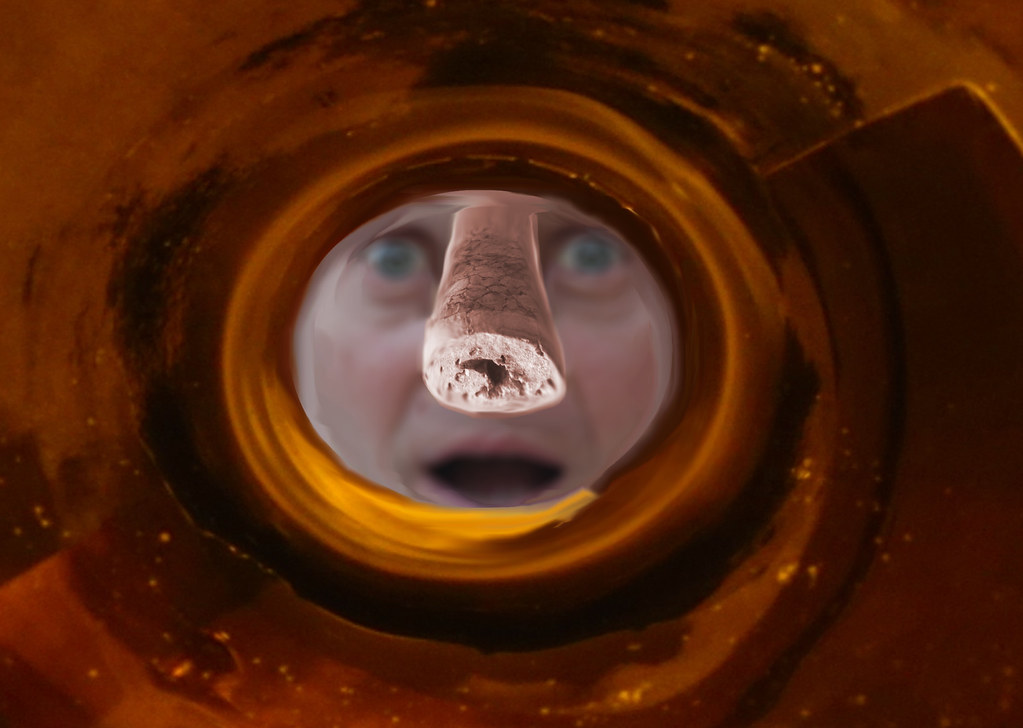Hello, readers! Happy New Year! I’m back! Here’s a short post to ease back into the swing of things!
——————————————————–
There are many different ways a winemaker can seal a bottle of wine, and exactly what type of closure is used varies for many reasons, including – but not limited to – wine style, aging potential, and finances. The chemical composition of a wine, combined with how it is stored as well as what type of closure seals the bottle, all influence how it will develop over time.
When it comes to wine bottle closures, much of the research is centered around oxygen transmission rates (OTRs), as oxygen is a key component in the evolution of organoleptic wine characteristics over time. Too much oxygen can quickly cause a wine to lose its fruity notes and develop oxidized characteristics, while too little oxygen results in the presence of reductive off-aromas.

A new study, to be published in the March 2020 issue (and currently available online) of the journal Food Packaging and Shelf Life, aimed to evaluate the volatile composition of a white wine after 48 months of bottle storage under different closure types, in order to add further understanding to how wine changes over storage time and how closure type might influence such changes.
Brief Methods
White wine was made using grapes from the 2013 vintage, and was a blend of different white varieties (the paper didn’t specify further). The wine was fermented in stainless steel tanks, bottled, and cellared for 48 months.
6 wine closure treatments were studied:
- two different 1+1 cork closures (granulated cork of different sizes: 2-4mm, and 1-2mm),
- two different microagglomerated cork closures (the corks were made with different polyurethane food binders),
- and two different co-extruded synthetic cork closures (polyethylene-based closures with two different oxygen permeability rates).
A model wine treatment was created and bottled using the same closures as the white wine and underwent 16 months of cellaring.
Chemical analysis was performed on the wines at bottling (including pH, ethanol content, density, total and volatile acidity), as well as after 48 months of aging (free and total SO2, color intensity).
Volatile composition was evaluated using HS-SPME-GC/MS.
A sensory analysis was performed after 48 months of aging by a panel of 7 experts from the Comissão de Viticultura da Região dos Vinhos Verdes and the University of Porto.
Selected Results
- 69 total volatile compounds were found in the study wines, including 2 that have not been reported in the primary literature for wine samples to date:
- The 2 “new” compounds found were: trans-4-tert-butylcyclohexanol and 2,4-di-tert-butylphenol.
- Analysis could not distinguish between the two different 1+1 cork closures, as well as the two different synthetic closures, though there were differences found in cork vs. synthetic.
- 1 + 1 cork:
- Wines had higher levels of ethyl hexanoate, ethyl octanoate, ethyl decanoate, 2-phenylethyl acetate, an ionone-like compound, and TDN compared with synthetic closures.
- More compounds associated with fruity/floral scents were found to be higher in wines closed with 1 + 1 cork.
- L-camphor was only found in wines closed with 1 + 1 corks (“fresh/minty”).
- Wines had higher levels of ethyl hexanoate, ethyl octanoate, ethyl decanoate, 2-phenylethyl acetate, an ionone-like compound, and TDN compared with synthetic closures.
- Microagglomerated cork:
- Wines had higher levels of an ionone-like compound and TDN compared with synthetic closures.
- Synthetic cork:
- 2,4-di-tert-butylphenol was only found in wines closed with synthetic corks.
- Total and free SO2 levels were significantly lower in wines closed with synthetic cork compared with all other closures studied.
- Wine color intensity indicator A420 was found to be significantly higher in wines closed with synthetic cork compared with all other closures studied.
- Wine model solution:
- The compounds 2,4-di-tert-butylphenol, trans-4-tert-butylcylohexanol, and L-camphor, which were found unique to specific wine closure types, were also all found in the wine model solution after 16 months aging.
- Sensory analysis:
- Wines closed with 1 + 1 corks and microagglomerated corks scored higher for aroma intensity and aroma quality and balance than wines closed with synthetic corks.
- Wines closed with synthetic corks scored higher for oxidation characteristics compared to wines closed with 1 + 1 corks and microagglomerated corks.
Conclusions
Overall, this study provides data/evidence for the volatile composition of a white wine under different wine bottle closure types. From these results, it seems that wines closed with 1 + 1 cork had the most desirable volatile aroma characteristics out of the bunch, and wines closed with synthetic closures were the most oxidized.
I started off thinking this would be a pretty interesting study, but then as I read further, I was annoyed by the fact that compared with the sheer number and variety of closure types on the market today, this study compared relatively few of them. If you’re going to do a comparison study on wine bottle closures, how about do one that includes more variety of closures? What about screwcaps? Screwcaps are growing increasingly popular, so including that closure type would have been nice.

I suppose being a relatively small study, finances likely dictated what closure types could be chosen. Performing a study on more closure types might be cost-inhibitive, so I can understand why only a small subset of closures may have been chosen.
This study is also performed on one wine type – a white wine blend (the blend of which is unknown to us). The results seen here might not be the same for all wine types.
Interestingly, this study “discovered” two new compounds which have not yet previously been documented in the primary literature for white wines. More study is needed to determine where these compounds come from and how they evolve in wine (or if it was just a fluke).
A quick and relatively simple new study to share with you, and to ease my way back into a more regular posting schedule on the blog.
Source:

1 comment for “The Influence of Wine Bottle Closure on the Volatile Composition of a White Wine”